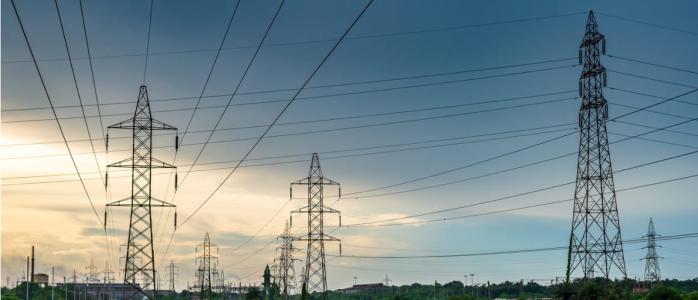



The nationwide lockdown because of Covid-19 has been in effect for nearly a month. In this short period, key sectors have unravelled from a total shutdown of economic activity, barring essential services. Over the last financial year, poor demand growth and a sluggish economy had precipitated demand induced stresses on the power sector. Besides, the non-performing assets crisis in the thermal generation sector over the last three years had already deflated investor confidence. There were indications that the UDAY scheme had not delivered on its promises. A scenario of discom losses inching their way back (and exceeding) to the pre-UDAY levels had been developing. Compounding the woes, after a mission mode approach to electrifying households under the Saubhagya scheme and adding 26.3 million new consumers, several states now have to cater to increased household demand. Discoms also have to contend with billing challenges and recovering dues on time, which is harder because of the current restrictions on movement.
In this three-part series, we first examine the fall in electricity demand across the country and the regional disparity. In the subsequent parts we discuss how the legacy challenges for discoms become more prominent in this Covid-19 induced demand crunch and the ability to rely on technology to overcome some of the key challenges associated with billing and collection.
The coronavirus pandemic has dealt a blow to India’s power sector with commercial, industrial and institutional activities remaining closed during the nationwide lockdown. Since 25 March 2020, we estimate that discoms across the country have seen reduced sales to the tune of 25 billion units (23 per cent of sales in April 2019). Weekly power demand has fallen by 28 per cent in this period, with a noticeably higher drop in the Northern and Western regions. Thermal power producers are the worst-affected. While the increase in demand from residential sectors might offer some respite, the financial impact of this sudden change on discoms is a major concern.
1. Weekly power demand dropped by 28% y-o-y basis
Power demand in India plunged by 14 per cent during the junta curfew on 22 March 2020. In the first week of the mandatory lockdown, India’s daily power demand dropped to a level lower than 2800 million units (MU), down by 28 per cent on a year-on-year basis, and has stayed within the 2600-2800 MU range during the weeks following the lockdown (Figure 1).
The last time India’s power demand was at these levels in the corresponding period was in 2014 (Figure 2). Since then, the power demand has been increasing at a compound annual growth rate (CAGR) of 5.8 per cent. Taking into account the expected growth in demand, the loss in power sales amounted to 1,186 MU/day or 25 billion units over the three-week (25 Mar – 14 Apr) period. This is equivalent to a revenue loss of nearly INR 15,000 crores and would impose significant liquidity stress on the discoms, which reported a cumulative loss of INR 28,000 crores in 20191.
2. Northern and Western regions see largest fall in demand
The impact of lockdown has been uneven across the country, as shown in Table 1. The drop in demand closely follows the share of commercial and industrial (C&I) consumers in the total demand. C&I activities have come to a standstill post the lockdown, barring a few essential services and industries.
However, the demand drop in the Southern region is lower than the share of C&I consumption in total demand. This is likely due to the higher electricity demand for domestic cooling purposes. The maximum temperature in major cities in Southern states crossed 35 degrees Celsius during the last week of March, while it was 30 degrees Celsius in the Northern region.
| Region | Y-o-Y drop in Demand (MU) | Y-o-Y drop in demand (%) | Share of C&I consumers in demand during FY19 (%) |
|---|---|---|---|
| Northern | 6550 | 32% | 38% |
| Western | 7563 | 30% | 44% |
| Southern | 4755 | 21% | 43% |
| Eastern | 1742 | 19% | 30% |
| North-Eastern | 119 | 13% | 37% |
Source: Author’s analysis based on data from POSOCO and supply tariff orders of different states
3. Thermal power producers are the worst hit
Figure 3 shows that the fall in demand has been mainly accommodated by backing-down thermal power generation. Thermal energy supply dropped by 27.5 per cent during the last week of March, as compared to the supply during the preceding week. On the other hand, renewable electricity sources seem to have maintained their contribution. This could be on account of two factors - 1) thermal plants conserving coal resources given the challenges in maintaining stocks over extended periods of lock-down, and 2) ‘must-run’ status of renewables being safeguarded.
As a result, the share of thermal power in the grid-energy mix has dropped by 6 per cent, while that of renewables and hydro has increased by 4.5 per cent. There are a few positive fall-outs from this change in generation mix. The carbon intensity and the criteria pollutant load (PM2.5, SOX, NOX) of India’s electricity mix has reduced. We estimate that this has resulted in a drop in CO2 emissions to the extent of 20.6 million tonnes, which is equivalent to 2 per cent of India’s annual emissions from power generation (2018-19)2.
With each summer being hotter than the previous, there might be a spurt in demand in the coming 8-10 weeks. The demand in states such as Bihar, Jharkhand and Uttar Pradesh, which have low levels of industrialisation, is already climbing to the levels that would have been seen in the normal course. This should bring some cheer to the generation sector. However, this period and the monsoons that follow also signal the growth in contribution from solar, wind and hydro sources of power. It is then likely that thermal generation will see subdued demand. While this poses a challenge for their financial well-being, it is also an opportunity to drive the transition away from coal-based generation. Consider retirements of old assets, and prioritise efficient assets by evaluating the costs that thermal generation has imposed on society as a whole - air pollution, soil and water pollution, and long-term climate change.
Shalu Agrawal is a Programme Lead and Danwant Narayanaswamy is a Research Analyst at The Council
Read Part 2: Solving for Billing and Revenue Collection Challenges During Covid-19
1Revenue loss is estimated using an average revenue realisation (ARR) of INR 6/unit. Even this is a conservative estimate as discoms are currently losing revenue from their highest paying consumers, while the demand from subsidised consumers has gone up.
2Assuming weighted average emission rate (exc. imports) for grid-electricity of 0.82 tCO2/MWh.






Add new comment